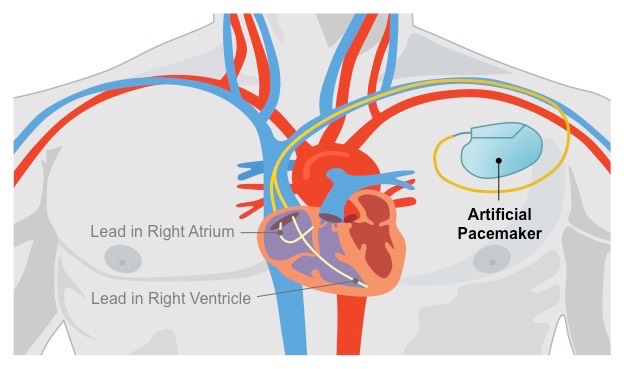![]()
Application:
• Use of artificial pacemakers to regulate the heart rate
An artificial pacemaker is a medical device that delivers electrical impulses to the heart in order to regulate heart rate
- Modern pacemakers are externally programmable, allowing cardiologists to make adjustments as required
Artificial pacemakers are typically used to treat one of two conditions:
- Abnormally slow heart rates (bradycardia)
- Arrhythmias arising from blockages within the heart’s electrical conduction system
Artificial Pacemaker

![]()
Application:
• Use of defibrillation to treat life threatening cardiac conditions
Fibrillation is the rapid, irregular and unsynchronised contraction of the heart muscle fibres
- This causes heart muscle to convulse spasmodically rather than beat in concert, preventing the optimal flow of blood
Fibrillation is treated by applying a controlled electrical current to the heart via a device called a defibrillator
- This functions to depolarise the heart tissue in an effort to terminate unsynchronised contractions
- Once heart tissue is depolarised, normal sinus rhythm should hopefully be re-established by the sinoatrial node
ECG Trace of a Patient with Ventricular Fibrillation

